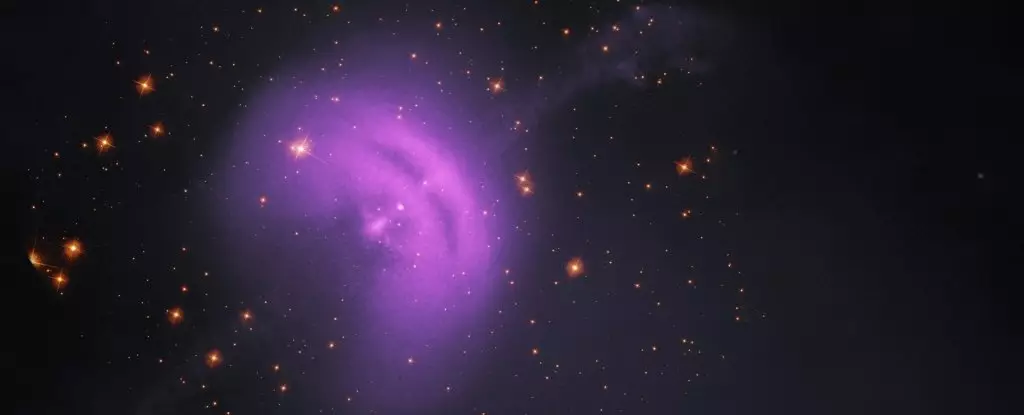In the vast expanse of the cosmos, particles such as cosmic rays are continually soaring toward Earth, delivering fundamental insights into the workings of the universe. Recent breakthroughs in astrophysical research have illuminated the origins of specific cosmic-ray electrons known as cosmic ray electrons (CRe), which have been identified as some of the most energetic particles ever detected. This new understanding highlights both the captivating capabilities of modern observatories and the enigmatic nature of the universe.
Cosmic-ray electrons and positrons, known collectively as CRe, possess staggering energies—up to 40 teraelectronvolts (TeV). Their detection marks a significant advancement in our understanding of high-energy astrophysics. The H.E.S.S. (High Energy Stereoscopic System) Observatory, nestled within Namibia’s arid landscape, has played a pivotal role in this discovery. Researchers assert that these potent particles primarily originate from our galactic neighborhood—within a few thousand light-years from the Solar System.
Astrophysicists, including Kathrin Egberts from the University of Potsdam, emphasize the importance of this finding. It hints at the existence of only a limited number of cosmic sources funneling energy into the Milky Way. Identifying these sources is crucial as they hold the key to understanding not only the nature of cosmic rays but also the processes governing some of the most extreme environments in our universe.
Cosmic ray electrons are not your average cosmic debris; they stem from extraordinary celestial phenomena such as supernova remnants, pulsars, and the powerful forces surrounding black holes. The acceleration mechanisms at play are fascinating. When these charged particles interact with magnetic fields or ambient radiation, they can achieve speeds approaching that of light. This interaction triggers an event known as Cherenkov radiation, akin to a sonic boom, but for particles moving faster than light—albeit within a medium such as Earth’s atmosphere.
Detecting CRe is no simple task. Their paths are erratic due to interactions with interstellar magnetic fields, making it difficult to ascertain their origins with precision. Already, gamma rays complicate this landscape as they produce similar atmospheric effects, further blurring the lines between electron and photon detection.
Researchers meticulously comb through the extensive observational data gathered by H.E.S.S. to identify candidate events for CRe detections. Their arduous investigation allows them to sift out probable gamma-ray candidates from genuine cosmic ray events. This discernment is pivotal: while both high-energy CRe and gamma rays induce electromagnetic showers when entering the atmosphere, their nature diverges significantly. Electrons are charged particles comprising matter, whereas gamma rays are photons, or packets of light.
The team’s findings reveal that CRe with energies surpassing 1 TeV are indeed rare, supporting the hypothesis that they lose energy rapidly during their cosmic travels. This necessitates that their origins are relatively close, reinforcing the notion that the energetic particles are likely birthed by stellar events close to the Sun.
The energy spectrum detected exhibits a notable behavior—a sharp cut-off at energies around 1.17 TeV. This implies a predominant source of these particles, as opposed to a multitude of sources contributing varying energy levels, which would produce a much smoother energy distribution.
Given the small volume of space from which these CRe are likely to have emerged, researchers can narrow down potential cosmic sources. Candidates include the Monogem Ring, a supernova remnant, or certain types of pulsars like Vela and Geminga. Other possibilities might include a fading supernova remnant, indicating that some of these sources may no longer be in their active phases, presenting unique challenges for astrophysicists.
Despite the uncertainty surrounding exact sources, the implications of this research extend far beyond mere identification. Understanding the mechanisms that generate these high-energy CRe could revolutionize our grasp of energy dynamics in the universe, providing insights into the evolution of stars, the workings of black holes, and beyond.
With ongoing investigations and a robust candidate list to analyze, researchers remain committed to deepening our understanding of cosmic rays. Attempts to discern a preferred direction from which these CRe arrive could open new avenues of research and potentially unveil hidden phenomena within our galaxy.
As Mathieu de Naurois of the French National Center for Scientific Research notes, the current findings not only mark a pivotal moment for our comprehension of cosmic ray origins but are likely to shape the trajectory of future studies in the field. The pursuit of knowledge about these high-energy particles is not merely an academic exercise; it profoundly influences our view of the universe and humanity’s place within it.
While significant strides have been made in understanding high-energy cosmic ray electrons, the journey to fully unraveling the secrets they hold in the grand tapestry of the universe continues. Each discovery propels us closer to illuminating the cosmic mysteries that have, for so long, remained shrouded in the depths of space.


Leave a Reply